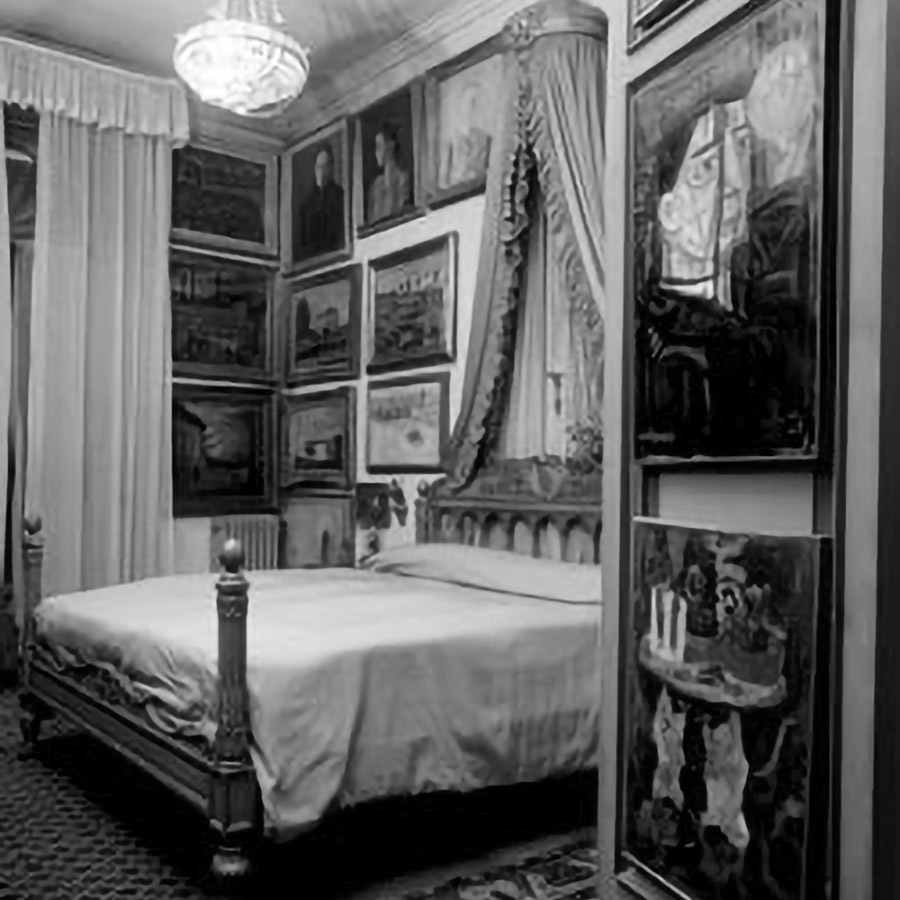The furnishings of Casa Museo
Quaderno 2
Marieda Di Stefano and Antonio Boschi’s passion for the art of their time, the attention with which they followed its development and participated in the lives of its protagonists had a constant influence over what they did and the environments they lived in. This made their apartment at number 15, Via Jan an extraordinary “inhabited museum”, a place where the demands of their collection seem to take precedence over domestic functions and where the spaces, the interior design and the furnishings were virtually “suppressed” under the rule of art. When the apartment was left to the City of Milan after Antonio Boschi’s death, complete with their art collection, but without most of the original furniture and accessories, the gaps in the furnishings seemed an irreparable loss, or at least sufficient to compromise the planned future Casa Museo.
Once the paintings and sculptures were repositioned on an exhibition basis and some of the few remaining pieces of furniture were recovered, some kind of “furnishing” was still needed to give the idea of a domestic setting and to remind visitors that they were in a home and not an art gallery. What was needed was to suggest the blend of affectionate associations which had bound the living environment of the Boschi couple to their paintings, sculptures and ceramics.
Fondazione Boschi Di Stefano therefore decided to purchase a selection of furnishings which would give the interiors an atmosphere of “rooms for living in” consistent with the idea of a very special museum: located on the second floor of a normal apartment block which is entered by passing through a normal lobby. This atmosphere was “reconstructed” by selecting furnishings consonant with the period of the building, constructed by the builders Radici Di Stefano between 1929 and 1931 and designed by the architect Piero Portaluppi (1888-1976). His “hand” is clearly visible in the exteriors, with the singular treatment of the diagonally set corners and also in the interiors with the finishings of the apartments and the décor of the lobby, the staircase and the landings.
The marked lines of corners and edges, the mixtilinear profiles and the broken lines which identify the Portaluppi’s artistic style in this period predominate in the mosaic floors, in the wrought iron balustrades and in the design of the lamps. With few exceptions, all the new furnishings of Casa Museo date back to the period between the two wars and they include lamps and furniture designed to harmonise both with the “past” of the house and with the current exhibition requirements. We therefore offer a brief guide to the furnishings to accompany your visit.
Ornella Selvafolta


